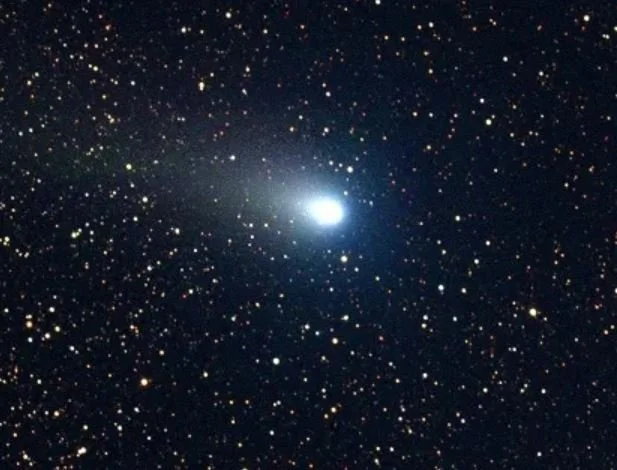21P/Giacobini-Zinner
Discovery
Comet 21P/Giacobini-Zinner was discovered by Michel Giacobini, a French astronomer, on December 20, 1900, and independently rediscovered by Ernst Zinner, a German astronomer, in 1913. Hence, it was named after both of its discoverers.
Orbit
Comet 21P/Giacobini-Zinner traverses a highly elliptical orbit around the Sun, completing one orbit roughly every 6.6 years. This orbit takes it from the outer reaches of the solar system, beyond the orbit of Jupiter (at its farthest point or aphelion), to its closest approach to the Sun (perihelion), which is just outside the Earth's orbit.
Physical Characteristics
Comets like Giacobini-Zinner are composed of a mixture of ice, dust, rock, and organic compounds. The nucleus, believed to be around 2.0 to 2.6 kilometers (1.2 to 1.6 miles) in diameter, is the solid core of the comet. As the comet approaches the Sun, solar radiation causes the ice to vaporize, releasing dust and gas, forming a glowing coma and characteristic tails that can stretch millions of kilometers through space.
Satellite
The comet's close approaches to Earth have provided remarkable opportunities for observation and study. The 1985 passage was particularly significant when the International Cometary Explorer (ICE) spacecraft, repurposed for cometary research, flew through the comet's tail. This encounter offered unprecedented scientific data, shedding light on the composition and structure of the comet.
Meteor Showers
Comet 21P/Giacobini-Zinner is associated with two meteor showers on Earth: the Draconids and the Giacobinids. When our planet passes through the debris left behind by the comet, this material enters the Earth's atmosphere, burning up and creating streaks of light known as meteors or shooting stars. The Draconids occur in early October and the Giacobinids in mid-October, offering skywatchers an opportunity to witness these celestial events.
Observations
Scientific observations of Comet 21P/Giacobini-Zinner have been conducted using various methods. Ground-based telescopes, space telescopes like the Hubble Space Telescope, and dedicated spacecraft missions have allowed scientists to study its composition, structure, and behavior. These observations have revealed details about the volatile nature of comets and the materials they contain, offering insights into the early solar system's formation and evolution.

